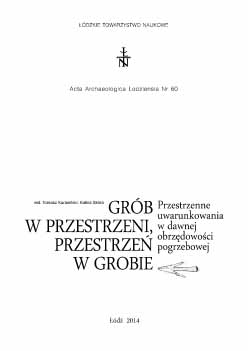Cmentarz w chrześcijańskiej przestrzeni średniowiecza
Cemetery in the christian space of the Middle Ages
Author(s): Marian RębkowskiSubject(s): Archaeology
Published by: Łódzkie Towarzystwo Naukowe
Keywords: Christianity; funeral rite; the Middle Ages
Summary/Abstract: One of the main features of the Christian funeral rite in the Middle Ages is supposed to have been a specific location of the graveyards. The paper aims to analyse how the problem of a choice and a location of burial space was presented in Rationale divinorum officiorum written by bishop Wiliam Durand of Mende in the end of the 13th century. The work was the most famous and most complete medieval handbook of Christian liturgy, containing the explanation of all the rites related to the Christian worship. According to Rationale the space was not homogenous. By means of rite of consecration a Bishop was able to delimit holy places („loca sacra”) where the God’s activity could be manifested in a special way. One of such places was also “locus religiosus” which was the space assigned for burying dead body of Christians and usually named cemetery. What is of special importance, there was expected a spatial unity of the cemetery with a church. As we know, the above norm has originated already in the 4th century. However, it can be supposed that the handbook allowed in the extraordinary situation a church and a cemetery were distant each other. To bury a body of dead Christian beyond the consecrated cemetery was allowed only in exceptional cases. The author defined in some way also the space of the Christian grave itself. Dead body was to be laid with a head turned towards West and feet towards East which means the position following the orientation of a church. It is well known, that this habit has also originated in the 4th century. Interesting conclusions may be drawn by a comparison of the contents of Rationale to the results of a rchaeological research on different peoples of the former Barbaricum Christianized in the early Middle Ages. Almost everywhere in the beginning there was visible two-way development in the location of inhumation cemeteries. Apart from the cemeteries situated just nearby churches there were also graveyards located without any spatial relation to a church. However, the latter have also some features typical for the Christian funeral requirements like for example the westeast orientation of bodies which resulted in row layout of the whole cemetery. The functioning of only one designated space for burying the dead, which means the final unification of burial customs, was taken over by churchyards c. 100-150 years after the Christianization.
Journal: Acta Archaeologica Lodziensia
- Issue Year: 2014
- Issue No: 60
- Page Range: 191-196
- Page Count: 6
- Language: Polish

